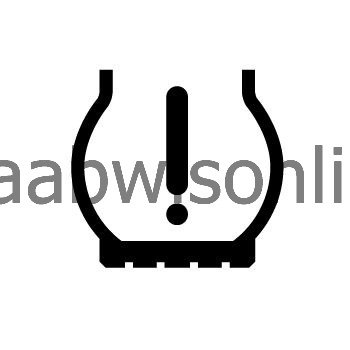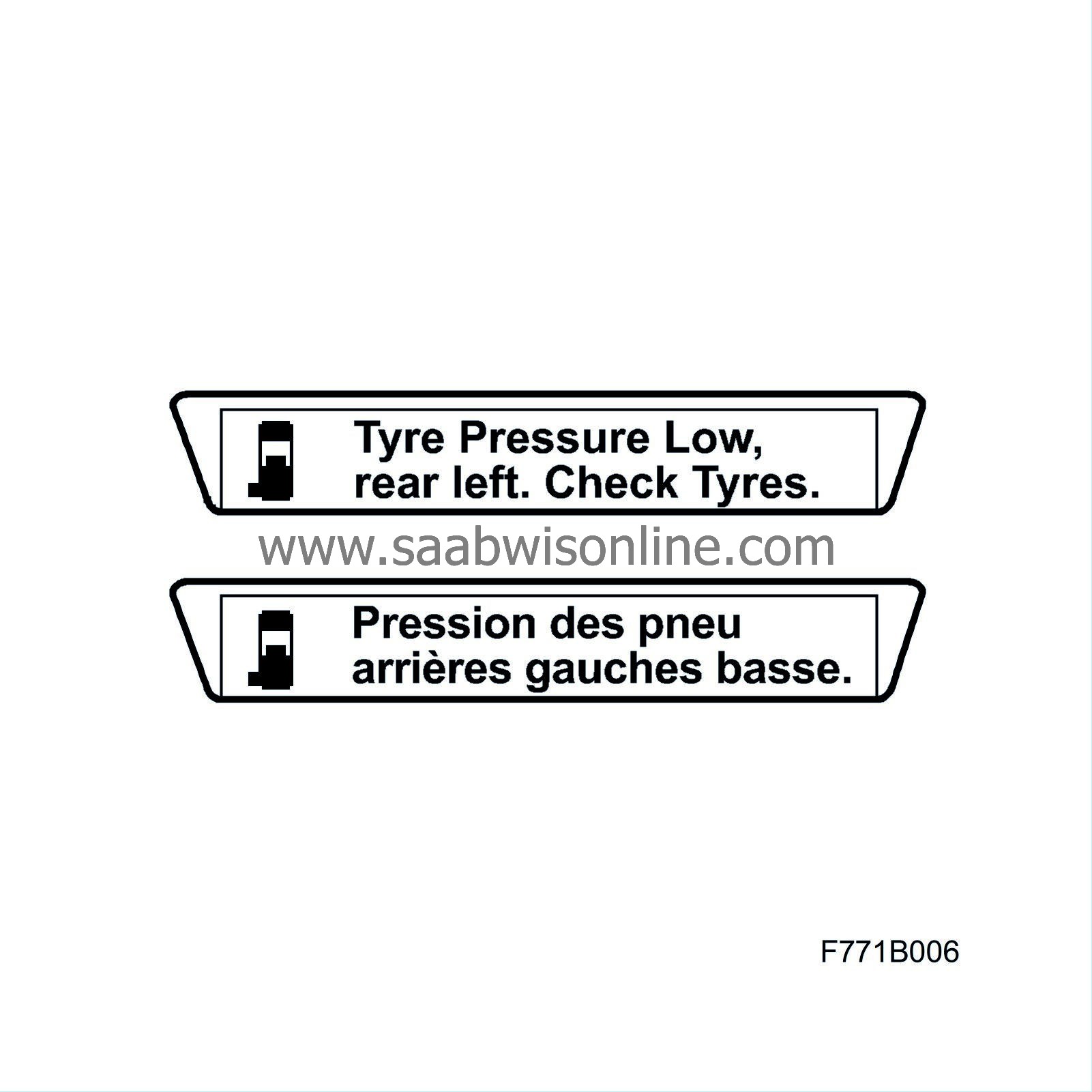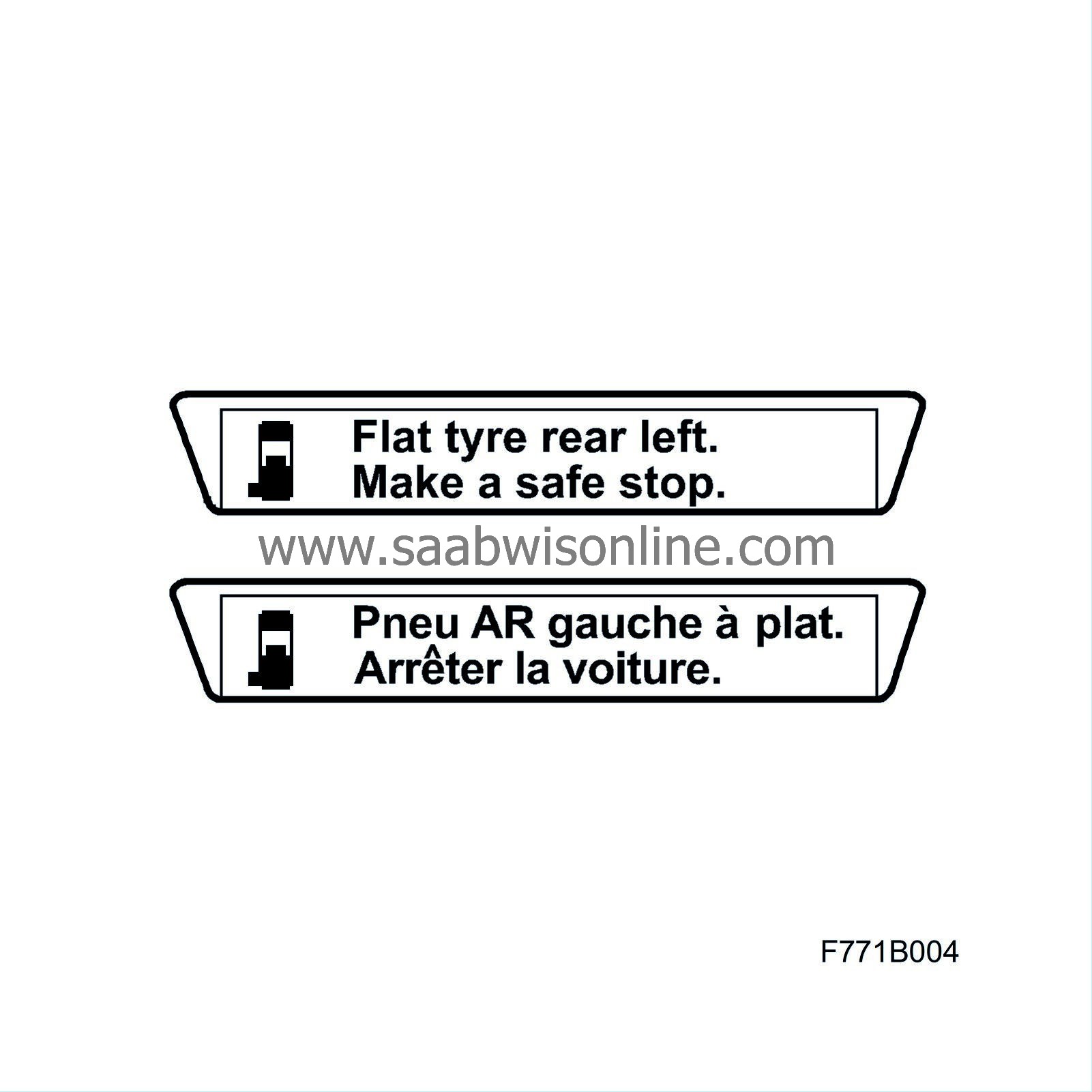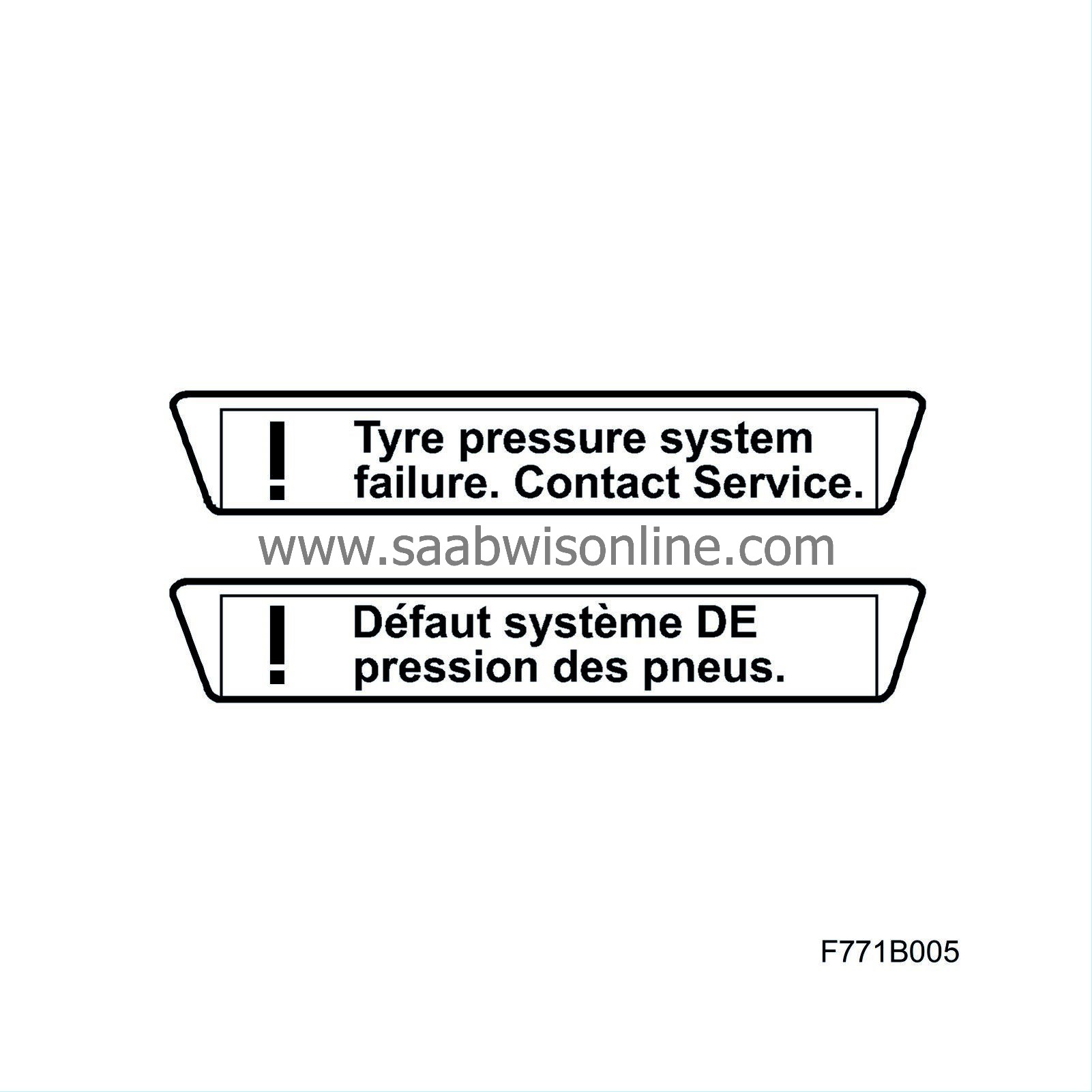(771-2720) TPMS warning tell-tale
|
TECHNICAL SERVICE BULLETIN
|
|
Bulletin Nbr:
|
771-2720
|
|
Date:
...........
|
December 2008
|
|
Market:
|
US/CA
|
Saab 9-3 och 9-5 M08-09.
This bulletin is made to explain the difference between "Check Tire
Pressure" / "Low Tire Pressure" and "Service Tire Pressure Monitor System"
messages.
When a customer complains on a condition related to tire pressure monitoring,
it is very important to distinguish between "Check Tire Pressure" / "Low Tire
Pressure" conditions and "Service Tire Pressure Monitor System" messages.
Understanding the difference between the distinct conditions will help you
to distinguish between normal system operation (tire needs air) and a system
malfunction.
There is one tell-tale in MIU to indicate both conditions which can
be determined by an ignition cycle. A message in SID will also tell the customer
what to do.
|
•
|
If the tell-tale light is steady on after an ignition cycle the
customer needs to re-inflate his tire/s. Refer to section 1 - Check Tire Pressure
/ Low Tire Pressure below.
|
|
•
|
If the tell-tale light after an ignition cycle is flashing for
60 seconds and then remains on it is most probably a system failure. Refer
to section 2 - System error messages.
|
|
•
|
The warranty issues are described in section 4 - Warranty.
|

|
1. Check Tire Pressure / Low Tire Pressure
|
Warning tell-tale in Main Instrument Unit (MIU)
During a "Check Tire Pressure" / "Low Tire Pressure" condition the tell-tale
will stay on solid and no failure codes are set.

Check Tire Pressure Warning
Occurs when the tire pressure has decreased to a warning level which
is depending on the tire loading information label value.
Tire loading information label value
|
Warning level
|
psi
|
kPa
|
psi
|
kPa
|
32
|
220
|
25
|
180
|
35
|
240
|
27
|
196
|
36
|
250
|
29
|
204
|

Low Tire Pressure Alarm
Occurs when the tire pressure has decreased to 24 psi (165 kPa) independent
of the tire loading information label value. An alarm message is also received
when leakage is greater than 3 psi/min (21 kPa/min).

Procedure
The TPM system is operating as designed.
|
•
|
The customer needs to correct the tire pressure. Use a good quality
pocket-type gauge to check tire pressure. One cannot tell if the tires are
properly inflated simply by looking at them. Show the customer where to find
the information in the owner's manual and on the label as well.
|
|
•
|
Inform the customer about the effects of outside temperature on
tire pressures, refer to section 3 - The Effect of Outside Temperatures on
Tire Pressures. Tire pressure increases as the tires become warm (e.g. 4 psi
(28 kPa)). Never reduce the pressure of a hot tire. If the tires are hot when
you check them, only increase the pressure, if necessary.
|

Warning tell-tale in Main Instrument Unit (MIU)
During a "Service Tire Pressure Monitor System" condition the tell-tale
will initially flash for 60 seconds and then turn solid after an ignition
cycle. Failure codes WILL be set.
System error message

TPMS has set failure codes or does not communicate on the bus.
Procedure
Connect the diagnostic tool, TECH2, to read out the failure codes and
follow the procedure in WIS.
|
Note
|
|
-
|
Saab uses an Auto-learn and Auto-locate system and the only allowed
diagnostic tool is the TECH2.
|
|
-
|
Kent-Moore special tool # J-46079 that is used on other GM brand
shall NOT be used on Saab 9-3/9-5 vehicles.
|
|
3. The Effect of Outside Temperatures on Tire Pressures
|
Important:
As a rule of thumb, tire pressure
will change about 7 kPa (1 psi) for every 6ºC (approx. 15ºF) decrease
in temperature - dropping when it gets colder outside, rising when it gets
warmer.
Tire pressure should be set to the specified tire loading information
label pressure at the lowest seasonal temperature the vehicle will encounter
during operation.
The correct action to avoid "Check Tire Pressure" messages due to extreme
temperature changes is to do the following:
|
•
|
Use an accurate, high quality tire pressure gauge.
|
|
•
|
Adjust the tire pressure to the tire loading information label
values after every tire rotation.
|
|
•
|
Let the vehicle sit and adjust the tire pressure to the specified
value when the tire temperature is at the lowest expected temperature.
|
|
•
|
Never set the tire pressure below the tire loading information
label value regardless of tire temperature or ambient temperatur.
|
Important:
On extremely cold days, if setting
the tire pressure when the vehicle has been indoors, it may be necessary to
compensate for the low outside temperatur by adding 21-28 kPa (3-4 psi) more
than the tire loading information label pressure. At some later time, when
the tires are cold (outdoors), the pressure should be re-checked and adjusted
to the tire loading information label pressure if necessary.
|
1.
|
If a customer complains on a "Check Tire Pressure" / "Low Tire
Pressure" message and tell-tale on (tell-tale was on steady - no flashing),
the tires should simply be inflated to the proper pressure - this is not a
warrantable repair. Also show the customer where to find the information in
the owner's manual and on the label.
|
|
2.
|
When customers bring their vehicle into the dealership with a
Service Tire Pressure Monitor System message and tell-tale (flashes on startup
and TECH2 codes in system) use Published Labor Operation Time in STM. However,
if a sensor is missing on any tire - this is not a warrantable repair.
|








